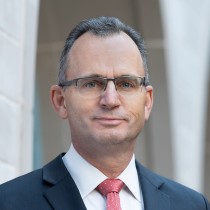Contents:
- Israel-Lebanon facing highest risk since October 2023
- Israel and Lebanon brace for yet another round of escalation
- The limits of US diplomacy tested by Middle East actors who repeatedly resort to military force
- Is the US is getting serious on Sudan?
- Assad and Putin meet amid growing speculation about Syria-Turkey normalization
- Egypt heaves sigh of relief, declaring fertilizer shortage over
Israel-Lebanon facing highest risk since October 2023
Paul Salem
Vice President for International Engagement

-
Lebanon is bracing for what is likely to be a set of intense attacks targeting Hezbollah positions, in retaliation for the July 27 attack on Majdal Shams.
-
The next few days will be critical, as US and regional diplomats hopefully urge careful calibration and restraint on both sides and focus on completing negotiations for a cease-fire in Gaza, a deal that would de-escalate tensions on the Israel-Lebanon border as well.
Lebanon and Israel are bracing for the highest risk of full-scale war since October 2023. This latest escalation was triggered by a rocket attack on the Arab Druze village of Majdal Shams in the Israeli-occupied Golan Heights on Saturday, July 27 that killed 12 young people. Israel launched a number of airstrikes on Hezbollah targets on Saturday night, but the Israeli security cabinet met Sunday afternoon, after Prime Minister Benjamin Netanyahu’s return from the US, to decide on further targets to be hit in Lebanon.
Israeli military and political leaders have been looking for ways to deal with the threat posed by Hezbollah for many months now; Prime Minister Netanyahu has just returned from a triumphant address to the US Congress; and Hezbollah might have given the Israeli government a provocation they can leverage. The most likely scenario is a series of intense air attacks on a number of Hezbollah military targets, in south Lebanon and the Bekaa Valley, carried out over the next few days.
Neither side wants a full-scale war, so Israel is likely to try to calibrate the attacks to be larger than what has come before, but not targeting major civilian or urban areas that might trigger a massive Hezbollah reaction. The attacks would certainly not “deal with” the threat posed by Hezbollah, but they can serve Prime Minister Netanyahu and others in the Israeli leadership as they seek to demonstrate to the public that they have taken strong action against Hezbollah.
For its part, Hezbollah is on the back foot. Most observers agree that the rocket that fell on Majdal Shams must have been in error — just prior, the group was claiming responsibility for several attacks on Israeli military posts nearby. Hezbollah is well aware that such an attack does not fit into its “resistance” narrative, and that Lebanon, including its own civilian base, is in no mood to be dragged into another major war with Israel. Accordingly, Hezbollah might be expected to exercise significant restraint and perhaps suffer a measured Israeli blow without dramatically escalating toward large-scale war. Iran would likely share the same attitude. Both Iran and Hezbollah have wanted to pin down and bleed Israeli forces over the last 10 months, not trigger a major war with Israel.
How the next few days are managed will be critical. One hopes and expects that US and regional diplomats are urging careful calibration and restraint on both sides to avoid a slide to full-scale war, and to focus on the key task of completing negotiations for a cease-fire in Gaza. Once an agreement is secured in Gaza, Hezbollah has been clear that it will cease fire as well, and US special envoy Amos Hochstein has been hard at work negotiating the outlines of new Israeli-Hezbollah security arrangements and the demarcation of the Israel-Lebanon land border.
Follow: @paul_salem
Israel and Lebanon brace for yet another round of escalation
Eran Etzion
Non-Resident Scholar

-
The July 27 killing of 12 young Druze permanent residents of Israel, in the Golan Heights town of Majdal Shams, has dramatically ramped up already heightened tensions on Israel’s northern border with Lebanon.
-
While the Lebanese government, the Israeli defense establishment, the Biden-Harris administration, and other third parties are all trying to bring about a choreographed Israeli response, followed by a Hezbollah reaction or non-reaction, and a return to the previous rules of engagement, nobody can really guarantee control of the situation.
In 10 months of intense war, the Israeli cabinet has never discussed, let alone determined, Israel's strategic war goals on the northern front with Lebanon. It was considered "a secondary effort," while the main focus was on Gaza. In recent weeks though, the balance between those two has gradually, incrementally began to shift. Hamas has been demonstrating more signs of stress, possibly asking Hezbollah to increase its combat engagement with Israel. The Lebanese Shi’a militia has been steadily increasing, expanding, and surgically calibrating its rounds of fire, using more sophisticated types of weapons, mostly a variety of drones and guided missiles.
Israel and Hezbollah have a long track record of formulating, following, and abrogating reciprocal and symmetrical "rules of engagement." These relate to the geographic depth of attacks, the nature of the targets — only military, or civilian as well, only peripheral, or strategic, and so on — and to the seniority of the operatives targeted. These rules are being voluntarily followed, while the US, France, and the UN are constantly monitoring the scene and trying to keep a lid on the pan. As the Twitter user "LittleMoiz" recently illustrated, this dynamic has essentially brought about a slow, spiraling escalation. On Saturday, July 27, it reached a new level, with the killing of 12 young Druze permanent residents of Israel, in the Golan Heights town of Majdal Shams, by an Iranian-made short-range heavy rocket. Hezbollah has tried to disassociate itself from the horrific attack, but Israel has established its involvement. What has followed since has been a series of Israeli declarations of "disproportionate retaliation" and Hezbollah counter-messages of "proportionally disproportionate reaction," while Iran has backed up its proxy with threatening rhetoric and the US and other go-betweens scramble to prevent a spillover to an all-out regional war.
Despite the heightened tensions, it is still widely believed that neither party is looking to escalate the situation. Rather, the Lebanese government, the Israeli defense establishment, the Biden-Harris administration, and other third parties are all trying to bring about a choreographed Israeli response, followed by a Hezbollah reaction or non-reaction, and a return to the previous rules of engagement. However, nobody can really guarantee control of the situation. To the contrary, the stakes are very high; the cross-cutting linkages between the Gaza, Lebanon, Iran, Israel, and US arenas are complex and hard to navigate; and the political leaderships in the US, Israel, and Lebanon are weak.
Netanyahu was in Washington, spending the weekend celebrating his Miami-based son's birthday, when the incident forced him to cut his visit short by a few hours. Biden has committed to achieving a hostage and cease-fire deal as a top priority in his remaining time in office, a deal which will also enable a new Lebanese-Israeli agreement on the implementation of UN Security Council Resolution 1701 and restore calm and normalcy for residents on both sides of the border. But it is abundantly clear that there is a significant divergence between the interests of the Israeli prime minister and those of the US president. The former is focused on "total victory," i.e. maintaining his position as prime minister at all costs. The latter is desperately looking to take the Middle East off the screens in the White House Situation Room, and in every American home, replacing them with Kamala Harris's campaign narrative. It would be very interesting to be a fly on the wall in the room where US and Iranian officials are negotiating right now — a very active backchannel. It is safe to assume that the shrewd Iranian negotiators are taking full advantage of the delicate political and strategic circumstances in which the US currently finds itself.
Follow: @eranetzion
The limits of US diplomacy tested by Middle East actors who repeatedly resort to military force
Brian Katulis
Senior Fellow for US Foreign Policy

-
Hezbollah’s attack on Israel threatens a wider regional war at a time when negotiators are hoping to achieve progress on a Gaza cease-fire.
-
The actions of regional players continue to drive events, but diplomacy combined with security support from external actors can help avoid worst-case scenarios.
“Fears of a wider war escalating” has become the evergreen headline of the Middle East in 2024, as the conflict between Hezbollah in Lebanon and Israel heats up after Saturday’s attack by Hezbollah that killed 12 children and injured another 44 people in the Druze Arab town of Majdal Shams in the Golan Heights.
Diplomats spent the weekend using multiple lines of communication to prevent a wider escalation both publicly and privately, but it looks like the situation could spiral further out of control and spark a wider regional conflagration. Many analysts say the best hope is for some sort of calibrated retaliation similar to what the US helped orchestrate between Israel and Iran in April, when the two countries carried out strikes against each other that did limited damage.
US Secretary of State Antony Blinken, speaking yesterday in Japan on a visit with US Defense Secretary Lloyd Austin, didn’t initially address the July 27 attack at a press availability, instead staying focused on his diplomatic mission in Asia and highlighting election results in Venezuela in his opening remarks. But when asked by a journalist, Blinken condemned the attack and restated America’s support for Israel’s right to defend its people from terrorist attacks. At the same time, Blinken also called for diplomatic efforts to stop the conflict from escalating and spreading.
This attack and its aftermath, like so many others, will test the limits of Biden’s Middle East diplomacy, which is also the title of a new Middle East Institute report released last week evaluating and grading the Biden administration’s handling of US policy toward the region nine months on from the Oct. 7 Hamas attack on Israel that began the war. A fundamental dilemma the Biden administration faces in trying to prioritize diplomacy in the Middle East today is that so many actors in the region, including both state and non-state ones, continue to turn to war and violence as a means to advance their goals. It’s not a new dilemma in the region, and it’s one that the next US administration will face no matter who wins America’s elections in November.
As US diplomats slipped into reactive crisis diplomacy mode once again following the Hezbollah attack, CIA Director Bill Burns met this weekend with Israel, Qatari, and Egyptian negotiators in Rome, the latest effort to produce forward momentum toward a cease-fire and hostage release deal in the Gaza war. In a briefing that I took part in last Friday afternoon, White House officials working on the Middle East made it clear once again that this potential deal was their top priority and that they had not mapped out a viable plan B in their strategy for the region if a cease-fire between Israel and Hamas is not achieved in these talks.
This weekend’s events underscore a key lesson from the first nine months of the Israel-Hamas war and the chronic fears about a wider regional escalation: Actors in the region continue to be the main drivers of events, and the United States continues to see the limits of its power and influence. Striking the right balance in its engagement and getting the mix correct between diplomacy and security support to key partners remains the fundamental challenge for US policy in the Middle East.
Follow: @Katulis
Is the US is getting serious on Sudan?
Jehanne Henry
Non-Resident Scholar

-
The US has invited Sudan’s warring sides to cease-fire talks in Switzerland next month, but so far only the paramilitary Rapid Support Forces has agreed to attend.
-
Although the talks would be narrowly focused on cessation of hostilities for delivery of humanitarian aid, given the severe impact of the war on the people of Sudan, the prospect of any progress on silencing the guns is more than welcome.
Last week, US Secretary of State Antony Blinken announced the US had invited Sudan’s warring sides — the Sudanese Armed Forces (SAF) and the paramilitary Rapid Support Forces (RSF) — to cease-fire talks in Switzerland next month. The invitation represents the highest-level US engagement on Sudan since war broke out in mid-April 2023, but even cautious optimism is premature if the SAF doesn’t agree to attend.
The move comes amid election-related uncertainty at the State Department, especially for US Special Envoy Tom Perriello, appointed earlier this year by Blinken. Since taking up his role, Perriello has consulted widely and criss-crossed the region to build support for the talks.
Whatever the reasons for the timing of this latest effort, the prospect of any progress on silencing the guns is more than welcome. For over 15 months, fighting between the SAF and the RSF has ravaged the country. The violence, exacerbated by entry into the fray by other armed actors, including former rebel groups from Darfur, has displaced millions, destroyed habitats, emptied farmlands, and turned the country into the world’s worst humanitarian crisis with tens of thousands killed and millions facing famine.
The scope of the talks would be narrow, focused on cessation of hostilities for delivery of humanitarian aid. “These talks do not aim to address broader political issues. As the Sudanese people have long demanded, Sudan’s governance must return to civilians and civilians must play the leading role in defining a process to address political issues and restore Sudan’s democratic transition,” reads the statement.
The proposed mediation, to be co-hosted by the Saudis and the Swiss, might overcome the persistent critique that past efforts lacked coordination — so essential in Sudan given the strategic and complex geopolitics of the Red Sea, Horn of Africa, and Sahel sub-regions. They come on the heels of a series of talks between UN Special Envoy for Sudan Ramtane Lamamra and each of the warring sides in Geneva over humanitarian access and protection of civilians, pursuant to recent UN Security Council resolutions on Sudan.
It could also overcome the critique that the US’s involvement has been too low-level for the frightening mess of the war, which American diplomats unceremoniously fled along with all other diplomats and UN staff within hours of the outbreak of fighting. Reportedly, if both warring sides attend, either Blinken or the US’s ambassador to the UN, Linda Thomas-Greenfield, is expected to host. This would bring more attention and possibly funds to address the crisis.
The RSF, true to form, accepted quickly, perhaps because they appear to be winning on the battlefield — they have captured garrisons across the majority of states, with some notable contested exceptions like El Fasher in North Darfur, El Obeid in North Kordofan, and Babanousa in West Kordofan state, still held by the SAF. The RSF also covets the legitimacy it might win from participation in the mediation and a large-scale humanitarian response.
But the SAF has yet to respond. The army’s commander, Gen. Abdel-Fattah al-Burhan, continues to be buffeted by competing interests, including those of hard-line Islamists who do not want the SAF to enter into negotiations with the RSF. And while some may see value in small steps to address the humanitarian catastrophe affecting millions of people, others may object to any talks that accord the RSF legitimacy. Until the SAF reaches some internal consensus and accepts mediation, even cautious optimism may be premature.
Follow: @jehannehenry
Assad and Putin meet amid growing speculation about Syria-Turkey normalization
Charles Lister
Senior Fellow, Director of Syria and Countering Terrorism & Extremism programs

-
Syrian President Bashar al-Assad’s visit to Moscow on July 24 comes against the backdrop of growing international speculation that major progress could soon be made in normalizing ties between the Assad regime and Turkey — a process that Russia is keen to facilitate.
-
Russia’s investment in Syria remains vitally important for a variety of geopolitical reasons, even as Moscow’s ability to strategically influence the Syrian crisis has markedly declined since its full-scale invasion of Ukraine in February 2022.
Syrian President Bashar al-Assad traveled to Moscow on July 24 and met for talks with Russian President Vladimir Putin — his first visit to the country since March 2023 and timed to mark the 80-year anniversary of the Syrian-Russian relationship. The visit included no fanfare: no publicized reception at the airport; no formal diplomatic ceremony; and no press conference. The visit was not revealed until the following day.
According to public readouts from Russian and Syrian state media, they discussed “political and military developments in the Middle East” and were “in full agreement over the defining existing risks,” while also sharing a desire to deepen economic ties between their two countries. No doubt, the prospect of widening regional escalation — vis-à-vis Hezbollah-Israel tensions and increasing Houthi hostilities — was cause for Russian concern.
But beyond such regional dynamics, Assad’s trip to Russia came on the heels of significant international speculation that major progress could soon be made in normalizing ties between Assad’s regime and Turkey. In recent weeks, Iraq has positioned itself as a potential mediator and facilitator of such rapprochement talks — which would elevate several years of behind-the-scenes intelligence contact onto the official, public diplomatic stage. More recently, Russia has sought to insert itself into the equation, suggesting that any such Syria-Turkey summit should be held on Russian soil.
However, despite speculation that Assad’s visit may have presaged a summit between Assad and Turkish President Recep Tayyip Erdoğan, both countries’ official reporting stressed that no such summit had been discussed. When pressed by reporters, Kremlin spokesman Dmitry Peskov said only that “there was a fairly broad exchange of views on all topics related to the state of affairs in the region and in Syria.” This response suggests that the issue came up, but that no agreement has been reached — at least not yet.
It is well known that Assad himself remains insistent on clear and irreversible guarantees that Turkey withdraw its troops from Syrian soil before any substantive progress is made on diplomatic normalization. That remains nigh-on impossible for Ankara. Nevertheless, incremental confidence-building steps are moving forward, particularly around the issues of joint military patrols, ramping up cross-line trade between regime and opposition territories, and exploring the re-opening of key sections of the M4 highway. Those are Russian-Turkish arrangements aimed at increasing connectivity with Syria and building trust for eventual diplomatic progress.
For Russia, its investment in Syria remains vitally important — in terms of Syria’s value in and of itself; in terms of the geopolitical frontline it affords against the United States; and also for the foothold it grants Russian in the Middle East at a time of profound instability. However, since the full-scale invasion of Ukraine in February 2022, Russia’s ability to strategically influence the Syrian crisis has markedly declined. Moscow’s approach to Syria has been defined by the status quo for the past couple of years and with events potentially outpacing Russia’s ability to exert control, this summit offered Putin an opportunity to at least present a semblance of strategic influence. Whether that image translates into reality — particularly when it comes to directing a normalizing of Syrian-Turkish ties — remains to be seen.
Follow: @Charles_Lister
Egypt heaves sigh of relief, declaring fertilizer shortage over
Mirette F. Mabrouk
Senior Fellow and Founding Director of the Egypt program

-
Egypt remains an agrarian society, with around 30% of its population directly involved in agriculture.
-
The fertilizer shortage had to be solved, if the country was to avoid social unrest
Egypt’s new minister of agriculture, Alaa Farouk, hit the ground running. He’s managed to be the bearer of some sorely needed good news. Over the weekend Farouk announced that Egypt’s fertilizer shortage was over and that in the first three weeks or so of July, the government had distributed more than 136,000 tons of fertilizer to farmers.
Fertilizer is big news in Egypt. The country both imports and exports the key agricultural input; in 2022 it was the fifth-largest exporter in the world, bringing in $3.37 billion worth of sorely needed hard currency. Last year, however, that figure dropped to $2.46 billion. The probable culprit was a shortage of natural gas, which powers production. This year, there was no doubt about what had thrown a spanner in the works, as a decline in natural gas production and several interruptions to gas imports from Israel due to the conflict in Gaza have shrunk gas supplies even further. As a result, Egyptians have suffered through a series of electricity blackouts once again this summer, making life an overheated misery for much of the population. As part of its mitigation efforts, the government had to import five shipments of liquified natural gas, pumping 155,000 cubic meters into market, while trimming domestic use. In the process, it cut off gas supplies to fertilizer companies, kickstarting a worrying cycle of events.
Egypt remains an agrarian society, with around 30% of its population directly involved in agriculture. The power shortages led to a dearth of fertilizer during the all-important agricultural season. Particularly hard hit were Egypt’s two largest crops: sugar beet and sugar cane. The country places a high premium on sugar; not only does the population have a famously sweet tooth, sugar is a valuable source of energy in what, for many, can be a limited diet. Last year, the combined beet and cane harvest resulted in total production of 2.8 million tons of sugar — 400,000 tons or more short of the national consumption of 3.2 million tons. One factor after another piled on to exacerbate the shortage, leading to a full-blown crisis. Soaring temperatures meant that less beet could be planted, supplies vanished and were not replenished. Increased demand and no new output meant that producers and major consumers like bakeries and factories starting hoarding supplies. Sugar vanished off the shelves in both modest and luxury supermarkets alike. As a result, sugar was rationed and people reported having to queue for hours to receive the assigned 2 kilograms, triggering fears of social unrest.
The risk of potential unrest reared its head again this year, as angry farmers felt abandoned by the government. They reported that the price of a sack of fertilizer shot up from EGP260 ($5.40) to EGP1000 ($20.70) with neither notice nor explanation.
The announcement by the minister came just in time. Egypt is still on an extremely slippery economic slope and anything that affects both the country’s largest employment sector and a major domestic commodity is to be avoided at all costs, if it is to prevent an outbreak of social unrest. Because at the end of the day, stability has always been the major deciding factor in the country’s economic policies.
Follow: @mmabrouk
Photo by KAWNAT HAJU/AFP via Getty Images
The Middle East Institute (MEI) is an independent, non-partisan, non-for-profit, educational organization. It does not engage in advocacy and its scholars’ opinions are their own. MEI welcomes financial donations, but retains sole editorial control over its work and its publications reflect only the authors’ views. For a listing of MEI donors, please click here.













